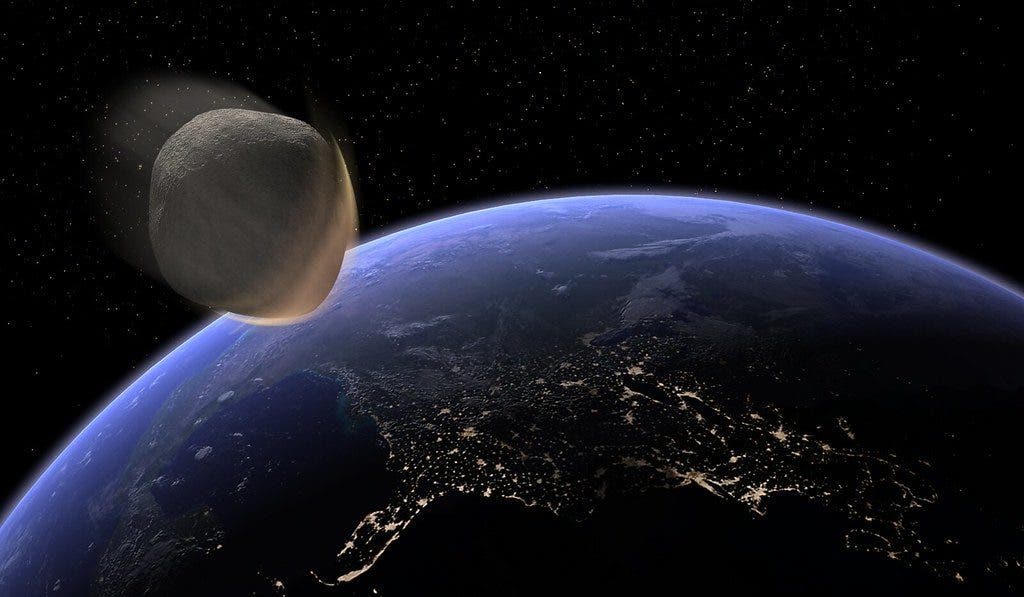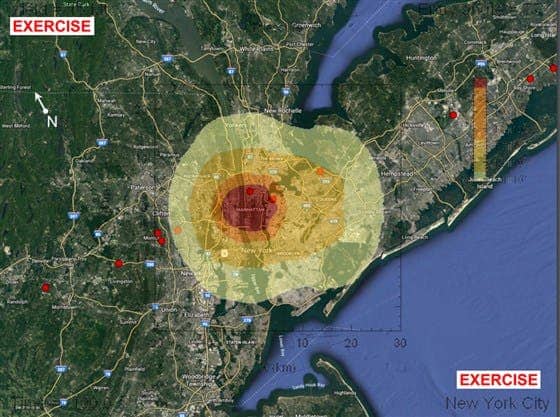
A 60-meter fictional asteroid slammed into the heart of New York City with a force 1,000 times more powerful than the A-bomb dropped on Hiroshima. The blast obliterated buildings from Central Park to lower Manhattan, causing up to 1.3 million fatalities. Luckily, this was just a drill — the culmination of a week-long exercise held in Washington last week which tested various planetary defense strategies at our disposal in the event of an asteroid threat. The findings suggest that we are still woefully unprepared to deal with threats from the sky.
Asteroids are one of the few extreme natural disasters that can be prevented
Dozens of astronomers, scholars, and disaster relief experts gathered at the biennial Planetary Defense Conference held last week. The main objective of the gathering was to assess the response ability of space missions and to what degree evacuation plans can mitigate the damage caused by a hypothetical asteroid impact.
The participants, which included experts from NASA, the Federal Emergency Management Agency (FEMA), and other federal agencies, were warned 8 years in advance that a 140- to 160-meter asteroid (500- to 850-foot-wide) was going to collide with Earth, somewhere near Denver, Colorado.
In this fictional scenario, NASA collaborates with the world’s foremost space agencies from Europe, Russia, China, and Japan to launch six spacecraft tasked with deflecting the killer asteroid by slamming into it. This approach, known as the kinetic impact technique, will actually be tested by NASA in the real world in 2021 with a mission called the Double Asteroid Redirection Test (DART). Some alternatives include gravitationally tugging the asteroid using a nearby spacecraft, painting the asteroid white to change the amount of radiation it absorbs from the sun and thereby shifting its trajectory, and blasting the space rock with nuclear weapons.
Each day of the conference, the clock was advanced by months or years and the participants had to make new decisions based on the updated situation of the simulation. Not long before the conference was supposed to end, the participants were announced that their efforts resulted in the deflection of the asteroid. However, the impact also knocked off a 60-meter fragment from the asteroid that continued its trajectory towards Earth.

On the last day of the conference and ten days before impact in the simulation’s time frame, the participants announced that the asteroid would make a direct hit on Central Park, in the heart of Manhattan, at 43,000 miles per hour. The situation was dire and the only thing the experts could do was to call for the evacuation of 10 million people living in a metropolis bottlenecked by bridges and tunnels. Although there are evacuation plans in place for New York, none is designed to take on this scale so authorities in the simulation quickly became overwhelmed.
“I think the exercise illustrated how time is the most valuable asset when it comes to asteroid hazards,” said Richard Binzel, a professor of planetary science at the Massachusetts Institute of Technology and a participant in the simulation. “In reality, having many decades of warning gives us multiple options and multiple tries to prevent catastrophe.”
Fortunately, a scenario in which an asteroid would hit a major city is extremely unlikely. Instead, an asteroid would likely hit the ocean, which covers most of the planet’s surface. What’s more, there is no known asteroid with a significant probability of impacting Earth in the next century. But that doesn’t mean that we shouldn’t prepare considering the catastrophic potential of an asteroid impact. According to researchers, there are 25,000 near-Earth asteroids as big as the space rock used in the simulation, two-thirds of which are not tracked.
At the conference, NASA stressed that the biggest takeaway from such a simulation is that asteroids represent a real threat to planetary security. Although most people associate asteroid impacts with Hollywood blockbusters, their devastating power is as real as it gets. Unlike the dinosaurs, however, we have the tools to avert our annihilation as long as we prepare properly.
According to NASA and FEMA, the best asteroid defense strategy is finding and deflecting a threat before it ever comes near Earth. In the future, NASA hopes to send a spacecraft to visit asteroid Apophis, which will narrowly miss Earth by just 19,000 miles in 2029.



